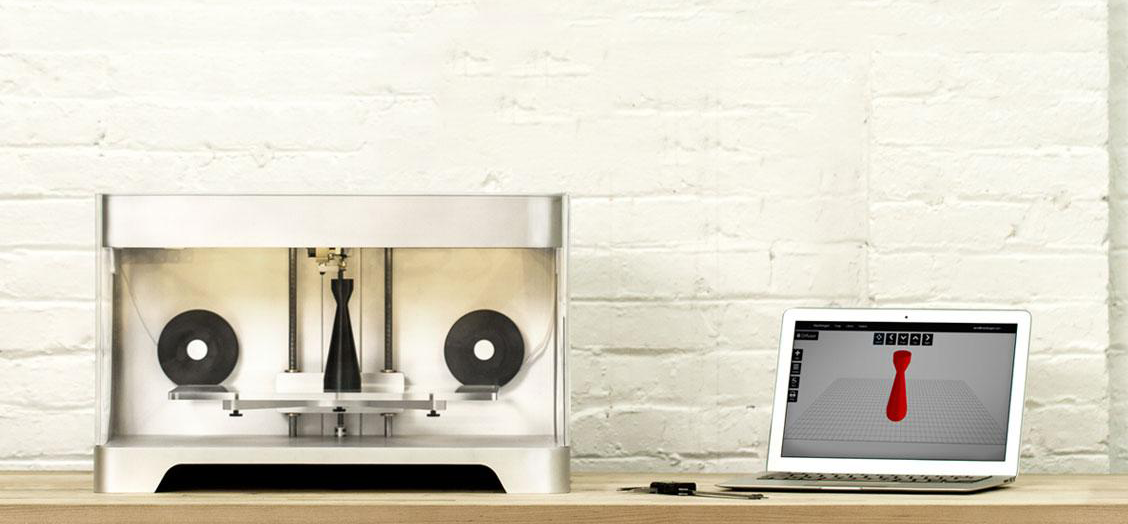Composites are one of the most interesting new frontiers for 3D printing materials, albeit one that is only at the very (very) beginning of its exploration. While there have already been practical attempts to implement composite material in 3D printing processes (such as this one by voxeljet) the first 3D printer that promises to be able to effectively 3D print using composite materials is the Markforged Mark One, which has just received the prestigious ACE (Award for Composites Excellence) from the American Composites Manufacturers Association (ACMA).
The Mark One can be pre-ordered as a development kit for $8799 or as a standard version for $4999 and should be shipping by the end of 2014. It surprised the world when it was announced that it would be capable of 3D printing using continuous carbon fibre, Kevlar and fiberglass materials, which enable it to produce parts that are as strong as some metals, effectively replacing aluminium at much lower costs.
It does this though a patent pending Composite Filament Fabrication (CFF) printhead, which lays the material down like a regular FFF printhead, but building functional parts by combining a proprietary nylon with continuous fiber filaments. The Mark One was invented by Greg Mark, an MIT aerospace engineer who spent years of designing and manufacturing high-performance composite race car wings at Aeromotions, before deciding he would work to implement 3D printing hardware to automate the composite lay-up process.
The ACE was assigned in the Manufacturing category at the latest Composites and Advanced Materials Expo (CAMX) in Orlando, Florida, as a recognition for a “material or process that best contributes to efficient manufacturing and product sustainability in the manufacturing of a specific, end-use composites product”. Entries are selected among innovative materials, production techniques or methods that result in better quality, reduced production costs, increased production rates and volume, or reduced life cycle costs.
In the constant quest for lighter, higher performance parts, composites materials have proven to be capable of replacing metals although – being a combination of different materials with very different properties – they are more complex to implement in 3D printing.
MarkForged’s innovative new material and printing process allows designers and engineers to 3D print real composite parts that are up to 5X stronger and 20X stiffer than traditionally 3D printed parts made from ABS plastic, while allowing for better control of material costs and avoid the trimming, mold-making, and curing required in traditional composite part lay-up.
“Many of our customers had never made composites before, and they are using the Mark One to produce brackets, tooling and fixtures that they used to make from aluminium,” says Greg Mark, CEO and Founder of MarkForged. “It’s amazing to see the innovative parts people are making with this new process.”






